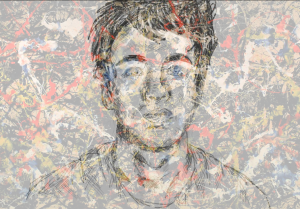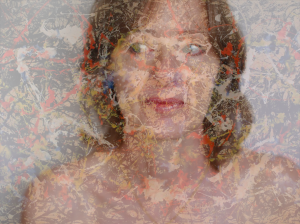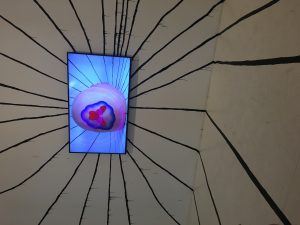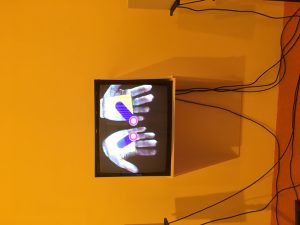This image is from a project called Part (14) which is made up of a series of self-portraits with a companion. The companion has been cropped out of most of the images, just leaving a trace of the person a suggestion that she is not alone. This picture evokes a feeling of sadness and acceptance, as if there is nowhere else for the subject to go, that the she would rather be anywhere than where she is. Nikki S Lee is portraying the subject with a faraway stare, gazing out of the frame, as if she has no care or love for the person who has their arm tentatively around her. Nikki S Lee can persuade you into believing something that may or may not be true (Hamilton, 2001) There is a tense aspect to the body language as she looks uptight, she has positioned herself far away from the person in the cab.
When Nikki was interviewed by Phil Lee for a piece in Chicago Art Journal, he questioned the apparent detachment of her gaze asked if it was intentional, she replied that it wasn’t. “I am easily detached from things around me and maybe that inclination was what was revealed.” Lee, 2008)
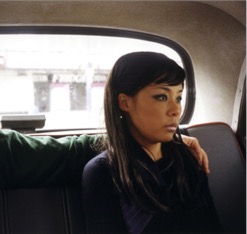
Nikki S Lee
Hamilton, W. (2001). SHOPPING WITH — Nikki S. Lee; Dressing the Part Is Her Art. [online] Nytimes.com. Available at: http://www.nytimes.com/2001/12/02/style/shopping-with-nikki-s-lee-dressing-the-part-is-her-art.html [Accessed 20 Oct. 2017].
Lee, P. (2008). Indefinite “Nikkis” in a World of Hyperreality: An Interview with Nikki S. Lee. Chicago Art J 18 2008, [online] 18(Fall 2008), p.76. Available at: https://kuvisualculture.files.wordpress.com/2011/03/2f7.pdf [Accessed 20 Oct. 2017].


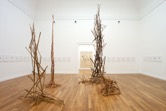 Toby Forward says in his essay entitled Naked and Unashamed, that, “Tracey’s work is about me” (Emin, 2007).
Toby Forward says in his essay entitled Naked and Unashamed, that, “Tracey’s work is about me” (Emin, 2007).
